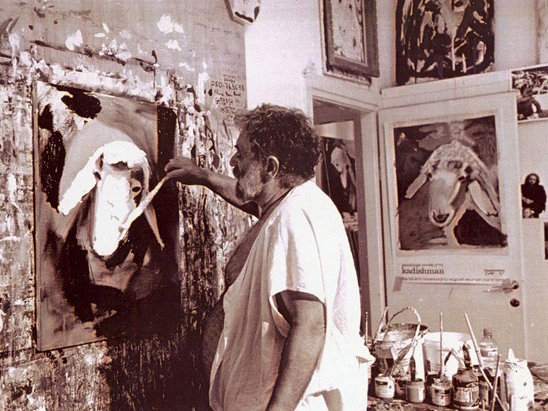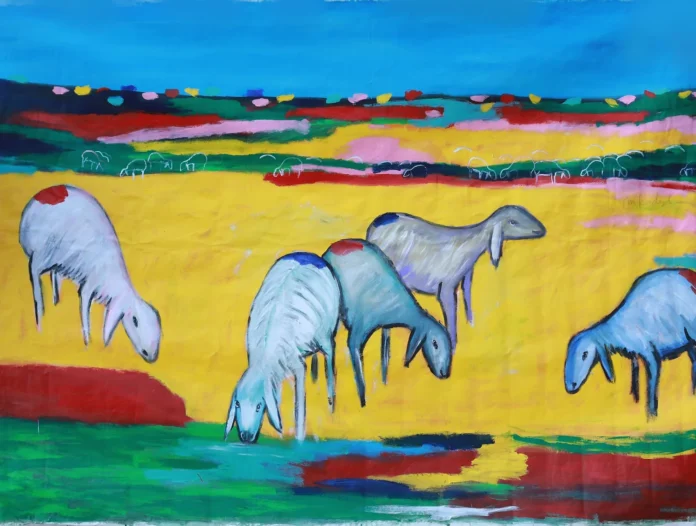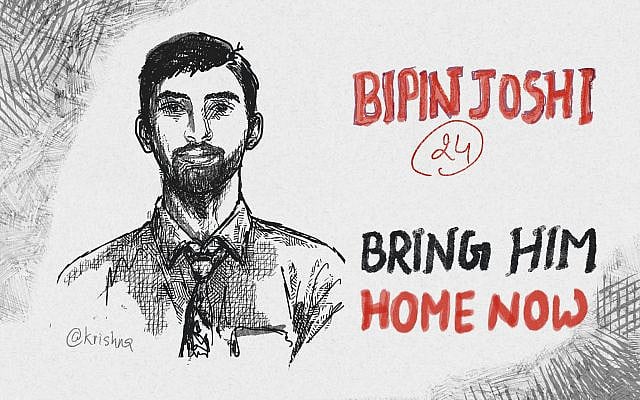Menashe Kadishman, born on August 21, 1932, in Tel Aviv, is one of Israel’s most celebrated artists. Known for his unique blend of sculpture and painting, Kadishman’s work reflects his deep connection to nature, his experiences in the Israeli army, and his innovative artistic vision. This article delves into the childhood, formative years, and illustrious career of Menashe Kadishman, highlighting the influences and milestones that shaped his artistic journey.
Early Life and Childhood
Menashe Kadishman was born into a modest family in Tel Aviv. His father, who worked as a builder, passed away when Menashe was just 15 years old, leaving his mother to support the family. Despite the hardships, Kadishman’s childhood was marked by a profound connection to nature and animals, themes that would later become central to his work.
As a child, Kadishman spent a significant amount of time in the countryside, where he developed a deep appreciation for the pastoral landscapes and the animals that inhabited them. These early experiences in nature not only provided solace but also served as a rich source of inspiration for his future artworks.
Formative Years and Military Service
At the age of 18, Kadishman joined the Israeli army and served as a shepherd in a military agricultural unit. This period was pivotal in his life, as it reinforced his bond with nature and animals. The experience of tending sheep in the hills of Israel left an indelible mark on Kadishman, influencing his artistic themes and style.
After completing his military service, Kadishman pursued formal art education. He studied under Israeli sculptors Moshe Sternschuss and Rudi Lehmann, who were instrumental in shaping his early artistic development. Sternschuss and Lehmann introduced Kadishman to various sculptural techniques and encouraged him to explore his unique voice as an artist.
Artistic Evolution and Early Career

In the late 1950s, Kadishman traveled to London to further his studies at the Saint Martin’s School of Art and the Slade School of Fine Art. During his time in London, Kadishman was exposed to the burgeoning modernist movement, which greatly influenced his work. He experimented with abstraction and minimalism, incorporating these elements into his sculptures and installations.
Kadishman’s early works primarily consisted of abstract metal sculptures. He gained recognition for his innovative use of industrial materials and his ability to infuse them with organic forms. His sculptures often explored the relationship between nature and industrialization, a theme that resonated with audiences and critics alike.
Return to Israel and Rise to Prominence
Upon returning to Israel in the 1960s, Kadishman continued to develop his artistic practice. He began to incorporate painting into his repertoire, creating a distinctive style that blended sculpture and painting. One of his most iconic series, “The Sheep Paintings,” emerged during this period. These paintings featured colorful, expressive depictions of sheep, a motif that symbolized innocence, sacrifice, and the pastoral life he cherished.
Kadishman’s sheep paintings became emblematic of his work, garnering widespread acclaim both in Israel and internationally. The simplicity and emotional depth of these works resonated with audiences, making them some of his most beloved pieces. The sheep motif also allowed Kadishman to explore themes of identity, spirituality, and human connection to nature.
In addition to his paintings, Kadishman continued to create large-scale sculptures. His works were featured in numerous exhibitions worldwide, and he represented Israel at the prestigious Venice Biennale in 1978. One of his notable public sculptures, “Suspended,” is a monumental piece installed at the Tel Aviv Museum of Art. The sculpture features a massive, suspended steel disk that seems to defy gravity, exemplifying Kadishman’s mastery of form and balance.
Later Life and Legacy
Throughout his career, Kadishman received numerous accolades for his contributions to art. In 1995, he was awarded the Israel Prize for sculpture, one of the country’s highest honors. His work continued to evolve, with later pieces incorporating elements of performance and environmental art.
Menashe Kadishman passed away on May 8, 2015, leaving behind a rich legacy that continues to inspire artists and art enthusiasts around the world. His unique ability to blend the natural and industrial, the abstract and the representational, has cemented his place as a pivotal figure in Israeli art.
Kadishman’s influence extends beyond his artwork. He was a mentor to many young artists, imparting his knowledge and passion for art. His contributions to the Israeli art scene have been profound, helping to shape its development and international reputation.
Menashe Kadishman’s life and art are a testament to the power of nature and the human spirit. From his humble beginnings in Tel Aviv to his rise as an internationally renowned artist, Kadishman remained true to his roots, continually drawing inspiration from the pastoral landscapes and animals he loved. His innovative approach to sculpture and painting has left an indelible mark on the art world, ensuring that his legacy will endure for generations to come.












